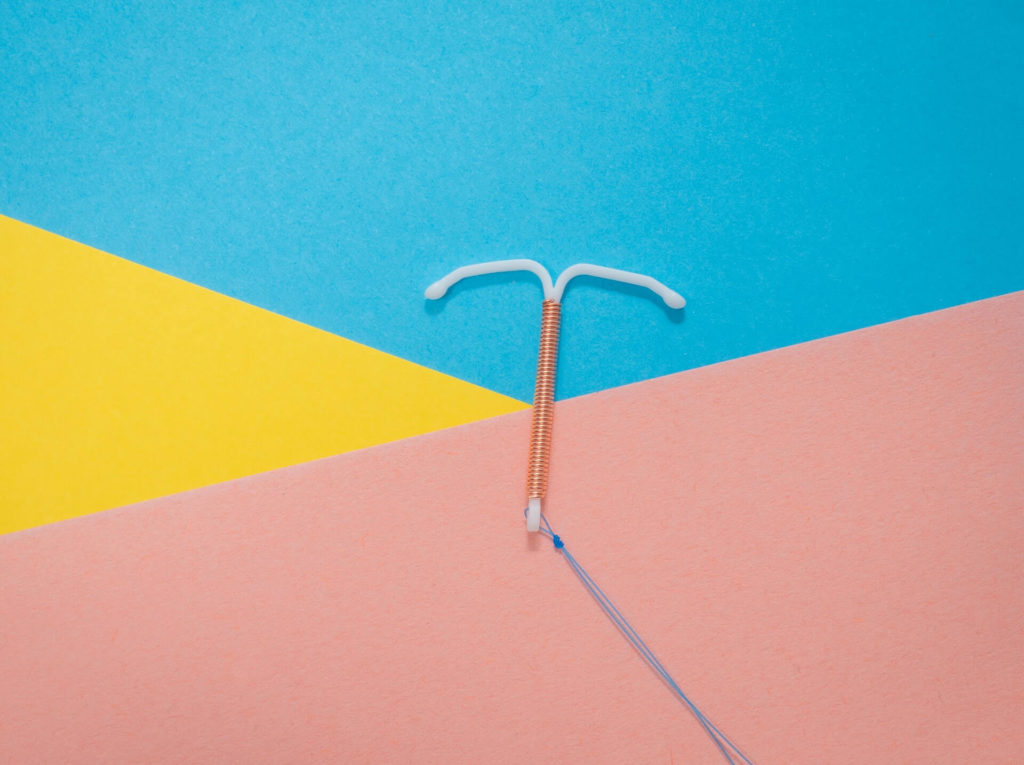With their 99 percent efficacy and duration that can last anywhere from 3 to 10 years, it’s no wonder intrauterine devices (IUDs) are surging in popularity as a birth control option among women.
IUDs have built their reputation on being generally safe and effective in preventing pregnancy. However, you cannot have the hype without hearing some rumors surrounding it.
IUDs are devices shrouded in mysteries, especially with ongoing talks about how painful the process of insertion really is.
In this article, you are welcome to join the discussion many women have been engaging in for some time now. The discussion about whether which one is more painful: IUD insertion or childbirth?
But before we get to that, it’s important to refresh your knowledge about IUDs first.
The IUD as a Birth Control Method
IUDs are long-acting reversible contraceptives (LARCs), along with implants. They are classified as such because they remain effective for a longer period of time even without user compliance.
In fact, according to 2015 data from the Centers for Disease Control and Prevention (CDC), the failure rate for LARCs is just around 0.5 to 0.8 percent.
The two main types of intrauterine devices are hormonal IUDs and copper IUDs.
The most popular hormonal IUDs on the market are Mirena, Skyla, Liletta, and Kyleena. On the other hand, the only brand of copper IUD in the United States is Paragard.
These two mainly differ in the way they prevent pregnancy.
A hormonal IUD makes use of hormones and releases them into your body. It stops the sperm from being able to reach the egg by thickening the mucus in your cervical canal. This kind of intrauterine device can last anywhere between 3 to 5 years, depending on the brand.
Meanwhile, unlike its hormonal counterpart, a copper IUD does not make use of hormones. It keeps you from being pregnant by releasing copper ions which are toxic to the sperm and deactivates it.
But even though they can stay for up to 10 years, this type of IUD was recently involved in controversies. And the reason may be a bit unsettling.
It’s because of the lawsuit named after the copper IUD’s sole brand, Paragard.
According to complaints filed by plaintiffs, Paragard is prone to breaking inside the body of the woman who had it inserted. This may lead to the device becoming embedded inside the uterus, piercing its walls. This can ultimately cause serious injuries to the woman due to fragment migration.
And despite the still increasing number of lawsuits filed against its manufacturer, Paragard continues to be available on the market.
In 2014, Teva Pharmaceuticals, the company behind the medical device, initiated a Paragard recall, affecting two lots of the product due to lack of assurance of sterility, according to an archived FDA report. But the medical device wasn’t recalled for breakage issues and has no other recalls up to this day.
What Getting An IUD Feels Like
This question has been scaring women for a long time now.
But what does getting an IUD feel like, exactly?
According to Planned Parenthood, you can think of it as a series of pain or cramps, which can be worse for some.
Meanwhile, in a report from Cosmopolitan, some women felt like “the insertion was just a pinch,” while others say, “the actual insertion was about five seconds of the worst pain I’ve ever felt in my life.”
So which one do we believe?
If anything, we do not have to choose.
Those statements from brave women who spoke from experience following IUD insertion just proved that each person’s encounter with the device is different. At the end of the day, preparing yourself for the procedure should be a top priority. It’s also worth noting that everyone has a different pain tolerance.
How Long Does Pain after IUD Insertion Last?
It’s totally normal to have cramps after getting an IUD.
However, the duration of cramps may differ from person to person. The type of intrauterine device (IUD) you had inserted can also affect how long you may experience cramping.
For instance, hormonal types like Mirena, Skyla, Kyleena, and Liletta might cause less pain. But with a nonhormonal one, women may experience more cramping.
Usually, women tend to feel better after a couple of months once their uterus gets used to it. But everyone’s experience is different. For some women, the cramping may last up to 2 days after IUD insertion by your doctor. For others, it may last a few weeks. It could also last from 3 to 6 months before the cramping completely subsides.
After getting an IUD, it is also okay to notice some irregular spotting with some blood clots. In some cases, women experience irregular spotting and bleeding for up to six months after getting the IUD.
However, if you are still experiencing these complications beyond the first six months, you should see your doctor.
So Which One Hurts More: IUD Insertion or Childbirth?
Before the debate starts, let’s take a closer look first at what really happens during IUD insertion.
During the procedure, your doctor will put a speculum into your vagina. Then, your doctor will clean it along with your cervix using an antiseptic solution. Then, they might use a special instrument to put the device in through the cervix opening and into your uterus.
Next, your doctor will fold down the IUD’s horizontal arms and then place the device in an applicator tube. This tube then goes to your cervical canal to carefully place the device inside your uterus. The whole procedure of insertion usually takes less than five minutes.
Yet, many women still ask: Why is IUD insertion so painful?
You can expect a certain amount of discomfort during IUD insertion.
Women tend to feel the most discomfort during the actual procedure of having an IUD inserted. Luckily for you, it only takes less than 30 seconds. Usually, this pain doesn’t last very long, and less than 20 percent of women will need treatment following the procedure.
In fact:
When asked to rate the pain on a scale of 0 to 10 — with 0 being the lowest and 10 being the highest — most women generally place the sensation in the range of 3 to 6 out of 10.
Three Major Cramps
Doctors commonly say that there are three major cramps that patients will experience throughout the procedure.
Women will feel the first major cramp when the doctor places an instrument on the cervix to stabilize it. The second big cramp comes during the measurement of the depth of the uterus.
Lastly, cramp number three occurs when the IUD itself goes in.
True enough, most women describe the pain they feel like cramping. But by the time the insertion is done, the pain score range drops to 0.
Women also tend to compare the experience of getting an intrauterine device with a pap smear. And the majority seem to agree that IUD insertion is slightly more painful compared to a pap smear.
However, this is not the only thing in a woman’s life where this procedure is being compared to. Some women also compare the pain of getting an intrauterine device to the pain of childbirth.
What Women Have to Say
We have all heard them: stories of women who gave birth to their little bundle of joy without feeling that much pain, thanks to epidurals. Some women say getting an IUD was less painful than they expected.
Then comes the horror stories.
The pain during hours of labor or complications that come after giving birth, and pain and side effects following an IUD insertion.
Some women thank the heavens for epidurals. They even went as far as saying that they feel that the so-called cramps they had during the insertion procedure actually felt like the pain they experienced during labor.
But some were much luckier, calling the insertion of the device as just a little pinch and telling stories of how they were able to get back to their daily routine just hours after the procedure.
These varied experiences are just proof that each person deals with pain a bit differently, and the pain threshold and tolerance are different for each woman.
If you have concerns or worries about getting an IUD, it is important to address whatever questions you have with your doctor beforehand.
Does The Procedure Hurt Less After Having a Baby?
Turns out, there is another factor that plays a role in the degree of pain one experiences when they decide to get an IUD.
Now, this might sound unfair but…
Women who have given birth to their baby actually have a slight advantage as compared to women who have never given birth before.
The thing is, women who have given birth vaginally tend to experience less pain than those women who have never been pregnant. For instance, someone who has given birth through vaginal delivery may describe that the pain has a score of 3 out of 10, while a woman who has never given birth before might describe the pain with a score of 5 t 6 out of 10.
Aside from this factor, stress, anxiety, and fear may also affect how pain feels for us.
So before you choose this birth control method, be sure that you know what to expect from the whole procedure. After all, open communication with your doctor is one important aspect of a positive IUD insertion experience.
Is IUD Removal as Painful as Insertion?
At some point, you might need to have your intrauterine device removed, or you might want to have it removed at an earlier time because you have made up your mind and decided you want to get pregnant.
Luckily, with an IUD, you do not have to worry about wanting to have it removed and getting pregnant after.
Another good news?
IUD removal is often less painful and less hassle than insertion, so you don’t have to be scared. And even though at times, it may be tempting, never try to remove the device on your own, as this could cause serious injuries or damage.
You should only have your IUD removed at your health care provider’s office.
According to studies, it is easier to undergo device removal when you are on your period because your cervix is naturally softened during this time.
For most women, an IUD removal is an uncomplicated procedure. In some cases, however, doctors find it hard to locate the IUD strings. If this happens, it’s either because they have slipped up into your cervical canal or they have gone up into the uterus.
Either way, your health care provider will find a way to locate the strings with the help of some medical instruments.
Let your health care provider know if you experience symptoms like severe pain or cramp, heavy vaginal bleeding, fever or chills, and foul-smelling vaginal discharge right after you had your IUD removed.
Thinking About Getting an IUD?
If you are considering getting an IUD but you are having doubts because you have fears of how much it will hurt, most doctors will be more than happy to give you a piece of advice on how you can lessen or better manage the pain during the process.
Some doctors will advise patients to take a medication like ibuprofen beforehand or even administer anesthesia in rare circumstances.
But above all, nothing beats being well-informed and having open communication with your provider for a hassle-free experience on your birth control choice.






